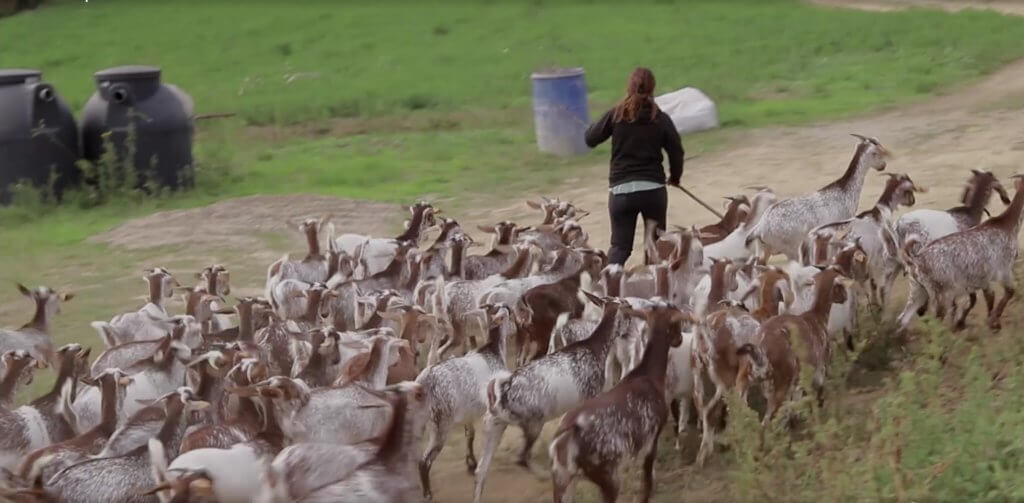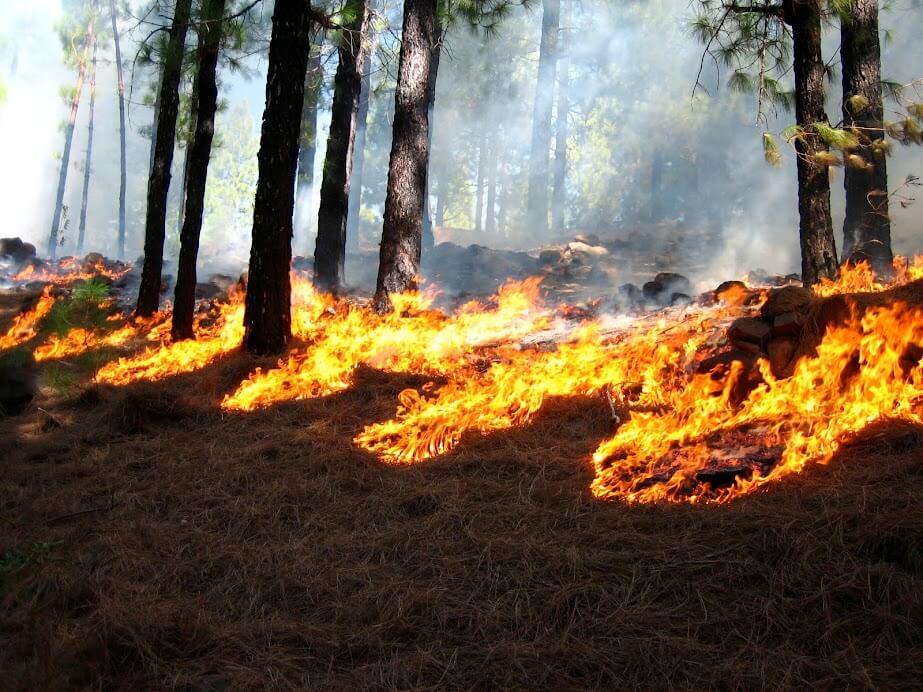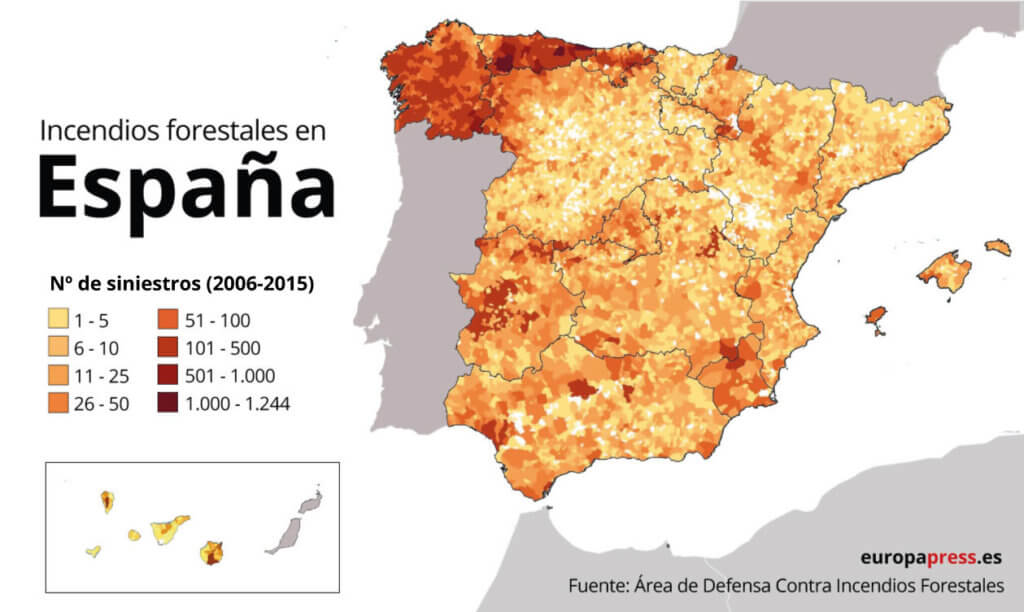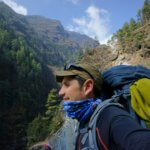TAKE BACK THE LAND
An active, rural Spain is a critical to the prevention of wildfires
By MARÍA SANTOS
EDITOR’S NOTE: The Spanish newspaper el Agora recently published an interview with Jordi Vendrell, firefighter by profession and general manager of the Pau Costa Foundation. Vendrell puts the increased fire risk in Spain in a global context, and analyzes the role of an active rural society in fire prevention. Reprinted with permission; translated and edited for clarity. This article is a follow up to the transcript in the Q3 issue of Wildfire of former Spanish prime minister Felipe Gonzalez’s presentation to the 16th Wildland Fire Safety Summit | Human Dimensions of Wildland Fire conference in May. The Pau Costa foundation is a supporting partner of IAWF.
The Pau Costa Foundation this year celebrates its 10th anniversary as a platform for exchanging knowledge about wildfires. More than 60 top-level multidisciplinary professionals founded this institution in 2011 with the aim of connecting a network of experts worldwide to improve the suppression and manage wildfire emergencies, to create awareness in society, in general, and to influence wildfire prevention through fire ecology.
This year has been a turning point due to the global increased risk of fires due to the abandonment of the landscape in rural environments and the impact of climate change.
Fire in itself is not bad, but fire is one functional element of the ecosystem that Spain has learned to manage over the years due to the intense exposure of the peninsula to these catastrophes. This experience has made Spain an international benchmark, not only in the fight of fires, but also in research and innovation in the field.
In fact, Spain, through the Pau Costa Foundation, will lead a European project that has been provided with 60 million euros in funding to identify strategic lines of research and determine where to invest in prevention, research, and territorial management.

Photo courtesy Pau Costa Foundation.
“From the Spanish experience we are going to identify and decide the key lines of the European Commission (EC) in the next 10 years in terms of wildfires,” said Jordi Vendrell, general manager of the Pau Costa Foundation.
The project will help to establish a collaborative and multidisciplinary strategy for forest management and the prevention and extinction of wildfires adapted to climate change, starting in Europe but with progress also in Argentina, Chile, Ecuador, and South Africa.
Vendrell said the wildfires in Turkey and Greece share structural causes that extend to the whole of the Mediterranean arc. For example, the vacating of rural areas for urban centers has favored the abandonment of traditional practices such as extensive cattle ranching and the use of forest masses, increasing the accumulation of fuel in the landscape. Additionally, the scarcity of rain and high temperatures increase the periods of risk and the intensity of the fires.
Vendrell points out that although the number of fires and the average area burned has decreased since the late 1990s, there have been more large wildfires that have burned more than 500 hectares and have done so with more intensity and virulence.
Fires spread at high speed and have much more impact on the ecosystem and biodiversity. “It is not the same to have a 10,000 hectares fire as it is to have a fire of 200 or 50 hectares,” Vendrell said. “Small ones go out and cause less damage in the short and medium term in the ecosystem.”
This dynamic of fewer fires, but more virulent and intense, is due to two fundamental factors: depopulation, and climate change. Rural depopulation since the end of the 1960s led to many hectares ceasing to be cultivated and cared for, generating more forest fuel load, and climate change is visible in higher average temperatures and a changing rain regime.
“The distribution of rainfall during the year has changed,” Vendrell said. “It does not rain the same now as 30 years ago, and it is not the same if 10 litres fall during 10 days as 100 liters in one day . . . Water evaporates more easily and our forests have less water to survive, they are more vulnerable, they suffer from water stress.
“In short,” Vendrell said, “we have much longer periods of fire risk that are no longer concentrated only in the summer season.”
To combat all this situation, the Pau Costa Foundation points to the need to work to keep the landscape alive and more prepared for this fire scenario through sustainable forest management in which traditional activities such as grazing or extensive livestock are brought back, together with forest harvesting, in addition to prescribed burning.

“The ecosystem role of fire must be valued and applied with strategies developed by experts and professionals who identify strategic areas to reduce the fuel load in the mountains,” Vendrell said.
It is necessary, Vendrell said, to place the value of ecosystem and environmental services of rural socio-economic activity in forest areas; these are activities that not only produce tangibles such as meat, milk, wool, crafts, but also preserve and keep alive a landscape that is more prepared for fire.
For this, Vendrell insists, it is necessary for consumers to know these intangible values and when purchasing products, incorporate rural production into buying habits, opting for local products that reward people who live in rural areas.
“Because only if [people] can live with dignity in rural areas will the landscapes be kept alive, as a society, we can decide which landscape is the one we want.”
Vendrell calls for a sustainable management strategy of the territory that revalues rural assets and local commerce, “repopulating emptied Spain and promoting a healthy rural economy would preserve and enrich biodiversity, reduce the risk of mega-fires and facilitate fire control.”

No. of wildfires 2006-2015
Source: Forest Fire Defense Area
Forest fires in 2021
In Spain, between 2010 and 2019, the number of wildfires fell by 36 per cent compared to the previous decade and the average area affected decreased by 27 per cent. However, the proportion of large fires grows year after year.
Wildfire burned a total of 37,535.90 hectares of forest area between January and July 2 this year, compared to 21,132.94 in the same period of 2020, and 58,209.46 in 2019, according to government data..
A total of 5,613 fires were recorded in that period.
Of these, 3,654 were smaller than one hectare; 1,959 were larger than one hectare and 11 exceeded 500 burned hectares.
By type of vegetation, most of the burned area reached 23,104.67 hectares of scrub and open forest, 10,693.33 hectares of wooded area, and 3,737.9 hectares of pastures and meadows.
According to data from Copernicus, the Earth observation program managed by the European Commission, from Jan. 1 to July 25 there were 12 large forest fires in Spain that devastated more than 26,000 hectares in total.
ABOUT PAU COSTA FOUNDATION
Pau Costa Foundation, through the Network of Drivers of Change (RIC/ Red de Impulsores del Cambio) of the Aquae Foundation, will promote not only the generation of self-protection plans for municipalities but will also influence the dissemination through citizen awareness actions on prevention and ecology from fire and wildfire.
ABOUT THE AUTHOR
 Jordi Vendrell is general manager of the Pau Costa Foundation. He has a Bachelor of Geography from the University of Barcelona (2010) has focused his studies in meteorology and the evolution of forest fires by convection. In 2006 he started working on forest fires in the Fire Department of Catalonia, where in 2008 he began working as a GRAF technical specialist. From there, he specialized in the study of the meteorological element, as a key, to predict the behavior of forest fires. In 2012 he began working at the Pau Costa Foundation, where he directs the R&D area, focusing his activity on fostering the exchange of knowledge among fire services. He had worked in the fire services of Portugal and France, implementing fire analysis. He is a professor at the Public Security Institute of Catalonia (ISPC) on forest fires and has given several lectures on the close relationship between meteorology, landscape and forest fires.
Jordi Vendrell is general manager of the Pau Costa Foundation. He has a Bachelor of Geography from the University of Barcelona (2010) has focused his studies in meteorology and the evolution of forest fires by convection. In 2006 he started working on forest fires in the Fire Department of Catalonia, where in 2008 he began working as a GRAF technical specialist. From there, he specialized in the study of the meteorological element, as a key, to predict the behavior of forest fires. In 2012 he began working at the Pau Costa Foundation, where he directs the R&D area, focusing his activity on fostering the exchange of knowledge among fire services. He had worked in the fire services of Portugal and France, implementing fire analysis. He is a professor at the Public Security Institute of Catalonia (ISPC) on forest fires and has given several lectures on the close relationship between meteorology, landscape and forest fires.
